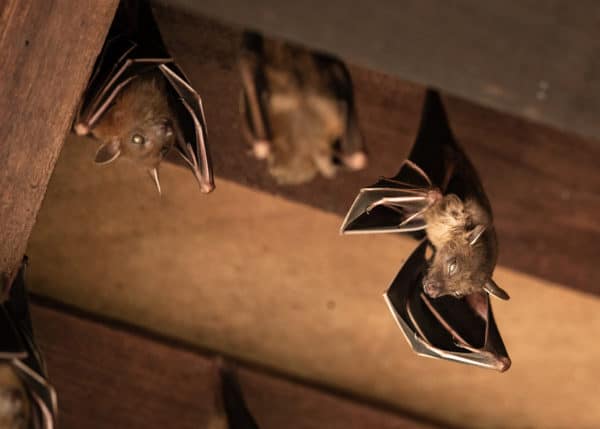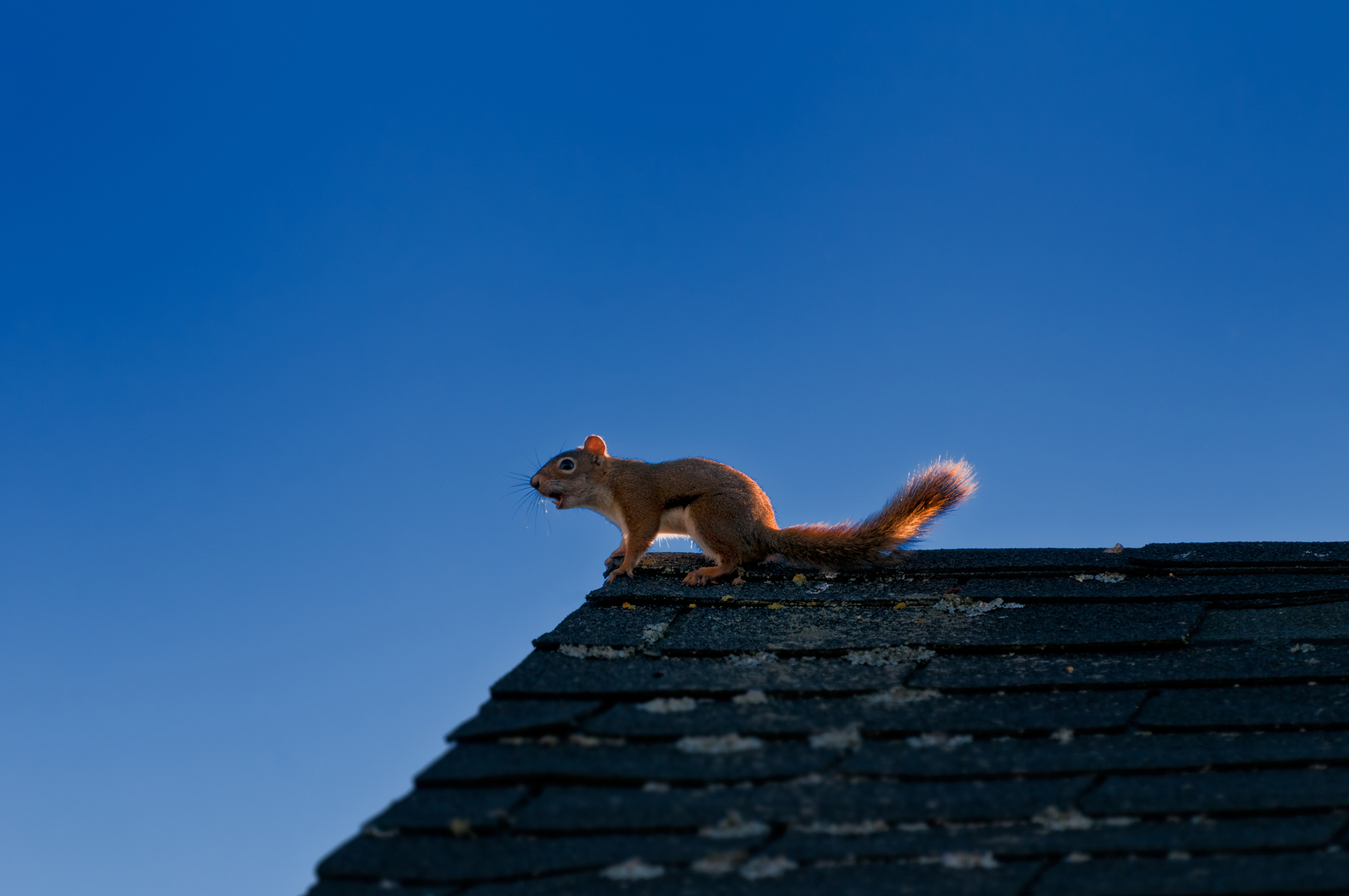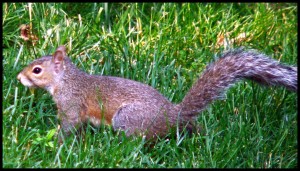READY TO GET STARTED?
REQUEST A FREE ESTIMATE
Fill out the form below or call (888) 466-7849 for a free, no-obligation estimate.

Nuisance wildlife is defined as any type of wild animal that invades a human habitat. This can include squirrels, skunks, opossum, raccoons, moles, voles, groundhogs, birds, bats, snakes, rodents, and more. Anytime a pest gets into your home the potential for damage and contamination is significant. That’s why it’s important to deal with the issue as soon as possible.
There are different ways to handle nuisance pests when they find a way into your home. Extermination involves killing the nuisance pest through the use of traps, toxins, and poisons. While this is generally cheaper and more efficient, the chemicals used can be dangerous for humans, pets, and other non-nuisance wildlife. Wildlife control involves the selective removal of problem populations of certain species of wildlife and usually employs the use of live traps or professional trappers to catch and relocate the nuisance pests to a safer habitat away from humans. This method usually takes longer than extermination and is more expensive. Wildlife exclusion is usually performed as a part of either of these wildlife services and involves preventative measures such as sealing up entry points and habitat modification (which ensures unwanted pests can’t access your property or structures).
Animal control services can be provided by your local government and is usually free although it is often selective in what types of animals they will service. Services provided and cost varies by area and municipality.
A professional wildlife control company will often combine wildlife control, exclusion and/or extermination methods depending on the type of pest you have. Whenever possible, humane control methods such as live removal and relocation are the preferred method of treatment.
Wildlife services typically range from $150 to $500 with the average visit costing between $250 and $250, although it can cost upwards of $1000 depending on what type of pest is involved and how much damage has already been caused. Most wildlife control companies will charge a flat fee or a minimum service fee (usually between $150 and $250), although some will also charge an additional hourly fee per hour after the first hour of service (anywhere from $25/hour to $250/hour depending on the service). This is determined by the type of pest problem, where it is located in the house, and what services are required (removal, exclusion, cleanup, etc). Raccoons and squirrels are usually the most expensive pests to service with an average of $200 to $1500 for a visit depending on the size of the infestation and the amount of damage inflicted. DIY traps can cost anywhere from $50 to $350.
In addition to fees for wildlife control services, damages caused by these nuisance pests is an often overlooked cost that should factor in to the overall budget. The longer you wait to get rid of the pest, the more damage that can occur. Nuisance pests can damage walls, chew through electrical wiring putting you at risk for fires, destroy insulation, and contaminate your home and HVAC system. Repairs for these issues including insulation replacement, wiring repair, drywall repair, duct repair, crawlspace cleaning and repair, and siding repair can be quite expensive and the cost can escalate quickly.
If you have a wildlife issue, contact a professional wildlife control company. A professional technician can inspect your home to determine what type of animal you are dealing with, the extent of the problem and damage, and appropriate ways to treat it. They can also provide you with wildlife exclusion techniques to help prevent repeat issues in the future. Professionals also guarantee their methods and are trained in the proper handling of wildlife, as well as the newest methods and techniques.
Is Mosquito Control Needed In Winter?
Where Did These Ants Come From?

Squirrels may seem cute and harmless…until they’re seeking warmth and shelter inside your home. As the weather gets colder, it’s common for small animals like squirrels to nest in your attic, usually gaining access from gaps around your roofline, through vents, or even chimneys. Other than being annoyingly noisy, squirrels can cause major damage inside your home by chewing on wires, which can lead to power outages or fire, by contaminating storage areas and insulation with fur, urine, and droppings, and by allowing other pests or rodents to enter your home through holes they’ve created to gain access into your home.
Because squirrels can chew through a lot of roofing materials, like wood, aluminum, or shingles, and fit through small openings, gaining access points into your attic is easy. If you see any gaps or holes, use wire to seal off the areas and caulking to seal smaller cracks and crevices.
If you’re sealing gaps, it’s possible to trap squirrels inside your attic where they could eventually die or create more damage by chewing their way out in other places. By trapping the squirrels, you can prevent this from happening. Trapping should be done by someone that’s experienced; we recommend calling in a wildlife control company for this that uses live traps and places the traps in strategic areas that the squirrels are likely to come across. Once the squirrels are caught, they should be moved outside of your home, far enough away so as not to tempt them to return.
Keeping tree limbs cut back and trimmed will further prevent squirrels from gaining access to your attic. Squirrels use tree limbs as a direct route onto your roof; cutting off these access points will eliminate a source of entry.
To get rid of squirrels isn’t an easy task. It often requires the knowledge and expertise of a wildlife control company. It’s equally as important to trap and remove the squirrels as it is to prevent them from coming back. A squirrel control professional will know how to find the squirrels, the most effective trapping and removal methods, and provide services and recommendations for future squirrel prevention.
In our last blog we discussed the potential health threats and property damage that animals can cause when they enter your home. We’re not talking about dogs and cats here, we’re talking about the animals that belong in the wild: bats, raccoons, squirrels , mice, opossums, and other wildlife. With the cold temperatures we are starting to experience, it’s a prime time for wild animals to seek warmth and shelter in homes.
Here are some helpful tips on how to keep wildlife out of your home:
If you hear wildlife in your home, it is best to call a professional animal removal company. Some animals can get aggressive when they feel they are being threatened. Northwest’s wildlife control specialist can help to remove the animal, seal off entry points, and help you to ensure that other wildlife do not return.
Those furry little creatures are cute outdoors but they somehow turn into scary monsters when they’re scurrying through your attic, basement, or even your walls. During the fall and winter months different wildlife can make their way into houses seeking warmth from the outside cold.
 Common invaders like squirrels, bats, raccoons, and possums can be a threat to your health, property, and even your safety. These animals can carry diseases and can even get aggressive when they feel threatened. They can damage your property by gnawing on sheet rock, wood, insulation, storage containers, and wiring (a potential fire hazard).
Common invaders like squirrels, bats, raccoons, and possums can be a threat to your health, property, and even your safety. These animals can carry diseases and can even get aggressive when they feel threatened. They can damage your property by gnawing on sheet rock, wood, insulation, storage containers, and wiring (a potential fire hazard).
There are easy steps to take that will help keep animals out of your home for the colder seasons: take trash out regularly and seal tightly and cut back tree limbs from your roof line. Animals, especially squirrels, use tree limbs as an entry to your home. Look for gnaw marks and feces and listen for scurrying sounds as indicators that you may have unwanted guests in your home.
Because these animals have a potential to be dangerous, it is best to call a wildlife removal company to properly remove these animals. Call Northwest Exterminating for animal removal.
Those furry little creatures are cute outdoors but they somehow turn into scary monsters when they’re scurrying through your attic, basement, or even your walls. During the fall and winter months different wildlife can make their way into houses seeking warmth from the outside cold.
 Common invaders like squirrels, bats, raccoons, and possums can be a threat to your health, property, and even your safety. These animals can carry diseases and can even get aggressive when they feel threatened. They can damage your property by gnawing on sheet rock, wood, insulation, storage containers, and wiring (a potential fire hazard).
Common invaders like squirrels, bats, raccoons, and possums can be a threat to your health, property, and even your safety. These animals can carry diseases and can even get aggressive when they feel threatened. They can damage your property by gnawing on sheet rock, wood, insulation, storage containers, and wiring (a potential fire hazard).
There are easy steps to take that will help keep animals out of your home for the colder seasons: take trash out regularly and seal tightly and cut back tree limbs from your roof line. Animals, especially squirrels, use tree limbs as an entry to your home. Look for gnaw marks and feces and listen for scurrying sounds as indicators that you may have unwanted guests in your home.
Because these animals have a potential to be dangerous, it is best to call a wildlife removal company to properly remove these animals. Call Northwest Exterminating for animal removal.